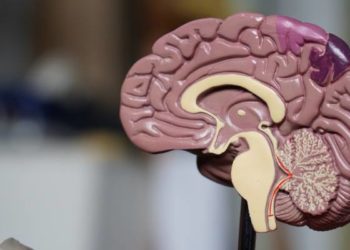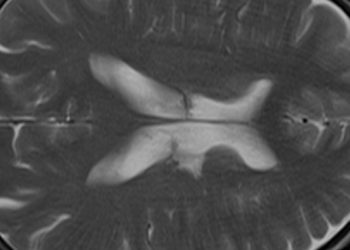2 Minute Medicine Rewind November 6, 2017
Major depressive disorder (MDD) affects a significant number of patients with chronic kidney disease (CKD). Due to safety concerns, these patients have been largely omitted from clinical trials evaluating the efficacy of commonly used antidepressants. In this randomized controlled trial, researchers 201 patients with stage 3, 4, or 5 non-dialysis dependent CKD were randomized to either sertraline, a selective serotonin reuptake inhibitor (SSRI), or placebo to study its impact on depressive severity after 12 weeks. Depressive symptoms were evaluated using the Quick Inventory of Depression Symptomatology (QIDS-C16). Secondary outcomes included adverse effects and quality of life. The mean baseline QIDS-C16 score in the sertraline group was 14.0 and in the placebo group 14.1. Researchers found that there were no significant differences in terms of change in QIDS-C16 score between treatment arms (p=0.82). There was also no significant difference in quality of life on the Kidney Disease Quality of Life survey (p=0.61). As for adverse effects, nausea, vomiting, and diarrhea occurred more frequently in the sertraline group compared to placebo (p<0.05). Ultimately, the results of this randomized controlled trial show indicate that after 12 weeks of use, sertraline does not result in significant improvement in depressive symptoms in CKD patients compared to placebo.
Disability Trajectories Before and After Stroke and Myocardial Infarction
Patients who suffer a stroke have traditionally been thought to sustain an acute disability, but subsequently have similar disability trajectories as those who did not have a stroke. This paradigm has been challenged where patients with vascular brain injury have an accelerated disability trajectory and worsening functional status, even without recurring events. In this prospective cohort study, researchers used the Cardiovascular Health Study (1989-2013) which and includes data on community dwelling adults age 65 and older to assess the effect of stroke on disability trajectories. Researchers compared individuals who had experienced a stroke (classified into ischemic, hemorrhagic or unknown) to those who had experienced a myocardial infarction (MI) as these patients have similar distributions of vascular risk factors. Researchers found that there was a greater increase in disability around the time of the event for stroke (0.88 points on disability scale, 95% CI 0.57 to 1.20, p<0.001) compared to MI (0.20 points on disability scale, 95% CI 0.06 to 0.35, p=0.006). In addition, the annual increase in disability after stroke more than tripled after stroke (before stroke 0.06 points on disability scale per year, 95% CI 0.002 to 0.12, p=0.04; after stroke 0.15 additional points per year, 95% CI 0.004 to 0.30, p=0.04). There was no significant difference in the annual increase in disability before or after MI. The results of this study therefore suggest that the trajectory of increasing disability is significantly steeper following a single stroke but not with an MI.
Prenatal Exposure to Acetaminophen and Risk of ADHD
Acetaminophen is frequently administered during pregnancy as part of the management of pain and fever. However, prior studies have raised concerns surrounding the potential link between acetaminophen use during pregnancy and the development of attention deficit hyperactivity disorder (ADHD) in the offspring. In this prospective cohort study, researchers used data from the Norwegian Patient Registry for 112,973 offspring from the Norwegian Mother and Child Cohort Study to estimate the association between maternal use of acetaminophen during pregnancy and of paternal use before pregnancy with ADHD. All women in Norway were sent a survey at 18-week gestation from 1999 to 2009. Of the 112,973 children included in the study, 2246 were diagnosed with ADHD. Researchers found that use of acetaminophen in any 2 trimesters was associated with an increased risk of ADHD in offspring (HR 1.22, 95% CI 1.07 to 1.38). Compared to short-term use, long-term use consisting of 29 days or more was also associated with an increased risk of ADHD in offspring (HR 2.20, 95% CI 1.50 to 3.24). Paternal use of acetaminophen 6 months before pregnancy and for more than 8-28 days (HR 1.81, 95% CI 1.26 to 2.60) or more than 29 days (HR 2.06, 95% CI 1.36 to 3.13) was also associated with an increased rate of diagnosis of ADHD. Ultimately, the results of this study indicate an association between ADHD and use of acetaminophen in pregnancy. Interestingly, paternal use of acetaminophen within 6 months prior to conception was also associated with ADHD in offspring.
Trends in Intravenous Antibiotic Duration for Urinary Tract Infections in Young Infants
Rapid initiation of empiric IV antibiotics in infants less than 60 days old suspected of having a bacterial infection is common practice until the infectious source is determined. However, the optimal duration of IV antibiotic therapy once a urinary tract infection (UTI) has been diagnosed is unknown. Current guidelines state that oral and parenteral antibiotic treatment for UTIs in children age 2 to 24 months of age are equally effective, but no guidelines exist for younger infants. In this retrospective cohort study, 3973 infants less than 60 days old with a discharge diagnosis of UTI who received antibiotics were followed up to assess trends in duration of IV antibiotics for UTIs and to determine if the duration of IV antibiotic treatment is associated with readmission. Researchers found that the overall percentage of patients receiving long-course IV antibiotics for UTI decreased from 50% in 2005 to 19% in 2015. In addition, there was no significant difference between patients treated with long-versus short-course IV therapy in terms of UTI-related readmission rates (OR 0.93, 95% CI 0.52 to 1.67, p=0.99) or all-cause readmission rates (OR 1.16, 95% CI 0.83 to 1.62, p=0.21). This study therefore shows that rates of receipt of antibiotics greater than a 4-day course of antibiotics in infants less than 60 days old for UTI have decreased over the past decade without an associated increase in readmission rates for UTI.
46-Year Trends in Systemic Lupus Erythematosus Mortality in the United States, 1968 to 2013
Patients with Systemic Lupus Erythematous (SLE) often have limited treatment options. While mortality trends have improved, the effect of recent advances in SLE diagnosis and treatment in the US has not been studied. In this nation-wide population-based study, researchers used the Centers for Disease Control and Prevention’s (CDC’s) Wide-ranging Online Data for Epidemiologic Research (WONDER) database to identify secular trends and population characteristics associated with SLE mortality (1968 to 2013). From 1968 to 2013, there were 50,249 and 100,851,288 deaths due to SLE and non-SLE causes, respectively. Over the study period, SLE age-standardized mortality rates (ASMRs) did not exhibit decline to the same degree as non-SLE ASMRs, with a 34.6% cumulative growth in the ratio of SLE to non-SLE ASMRs. SLE ASMRs were higher in the elderly, females, black and Hispanic individuals, and residents of the West (non-white individuals) and the South (non-Hispanic white individuals). Limitations of this study include the difficulty in determining coding accuracy on death certificates and possible underestimation of SLE ASMRs due to underreporting of SLE on death certificates. This study therefore shows that rates of SLE mortality have decreased since 1968. However, these rates remain high compared to non-SLE mortality, with significant disparities in terms of region, sex and race.
Image: PD
©2017 2 Minute Medicine, Inc. All rights reserved. No works may be reproduced without expressed written consent from 2 Minute Medicine, Inc. Inquire about licensing here. No article should be construed as medical advice and is not intended as such by the authors or by 2 Minute Medicine, Inc.






